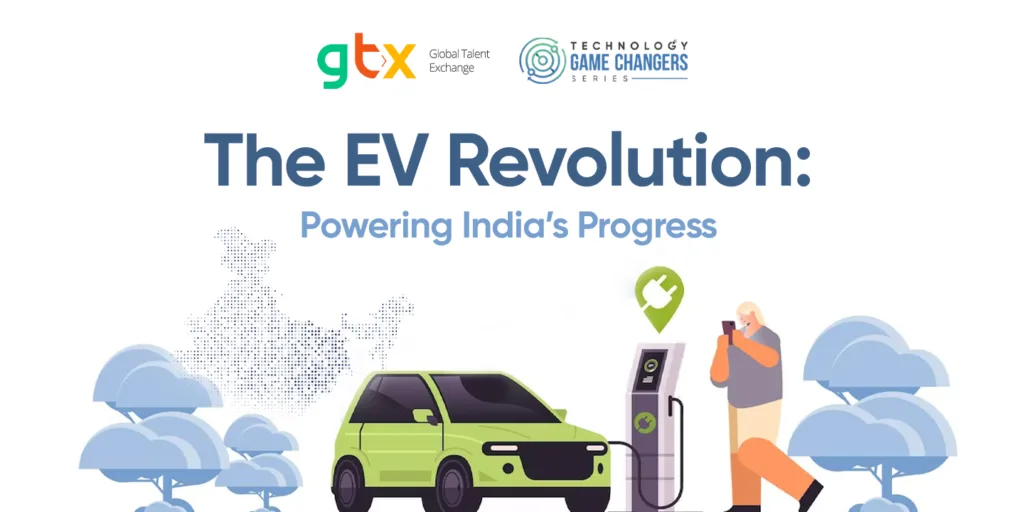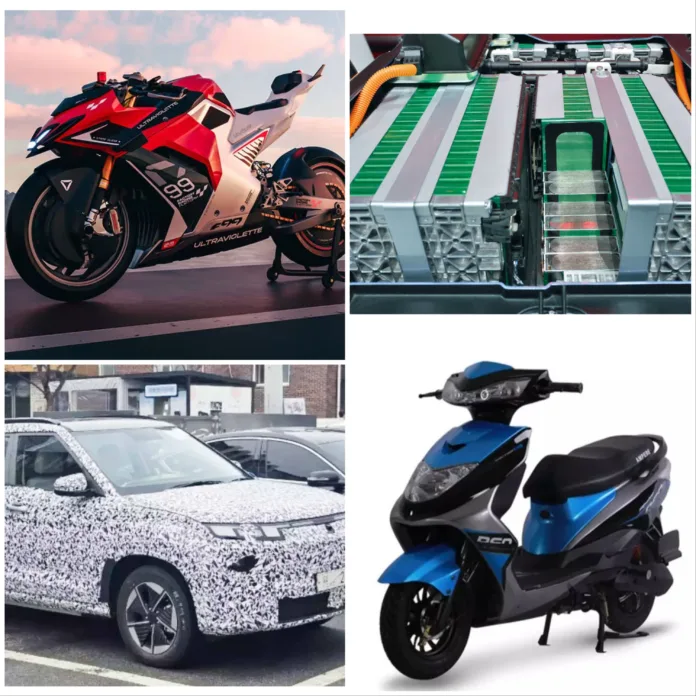India’s EV Sector in 2024: Record Growth, Challenges, and a Bright Future Ahead!
As 2024 comes to a close, India’s electric vehicle (EV) sector stands at a pivotal moment, driving the nation toward a cleaner, greener future. Traditionally dominated by petrol and diesel-powered vehicles, India is now witnessing an automotive revolution, with EVs becoming a key player in the country’s transportation landscape.
From record-breaking sales to groundbreaking innovations, the year 2024 has been a transformative one for the EV industry. Let’s dive into the challenges, opportunities, and future roadmap of India’s EV sector as it gears up for an electrified future.


India’s EV Market: A Year of Growth
The Indian EV market has experienced explosive growth in 2024, with sales crossing 1.8 million units by November, marking a 45% year-on-year increase, according to the Society of Manufacturers of Electric Vehicles (SMEV).
Key Market Insights
- Two- and Three-Wheelers Dominate: These segments account for over 90% of total EV sales, driven by affordability and practicality for urban and semi-urban areas.
- Projected Growth: The EV market in India is expected to grow from US3.21billionin2022∗∗toastaggering∗∗US 3.21 billion in 2022** to a staggering **US3.21billionin2022∗∗toastaggering∗∗US 113.99 billion by 2029, at a robust 66.52% CAGR (Fortune Business Insights).
This growth is fueled by a combination of government initiatives, technological advancements, and the efforts of key industry players.
Key Players Driving the EV Revolution
India’s EV sector is a dynamic mix of established automakers and innovative startups, each contributing to the industry’s rapid evolution.
Major Players
- Tata Motors: A leader in the four-wheeler EV segment with models like the Nexon EV.
- Mahindra Electric: Dominating the three-wheeler and last-mile mobility space.
- Ola Electric: Achieved a historic milestone in 2024 by selling 400,099 electric scooters, setting a new benchmark for the two-wheeler segment.
- Ather Energy: Known for its cutting-edge designs and battery efficiency.
Innovations in 2024
- Battery Efficiency: Companies are focusing on improving battery life and reducing charging times.
- Affordable Pricing: Electric two-wheelers are now available in the range of ₹90,000 to ₹1,50,000, making them accessible to a broader audience.
- Last-Mile Connectivity: Three-wheelers are transforming urban logistics and passenger transport.
Government Support: A Catalyst for Growth
The Indian government has been instrumental in accelerating the EV revolution through various policies and initiatives.
Key Initiatives
- FAME II Scheme: With an investment of ₹10,000 crore, this scheme has made EVs more affordable by offering subsidies and supporting the development of a nationwide charging network.
- State-Specific Policies: Tax exemptions, registration fee waivers, and incentives for EV buyers have further boosted adoption.
- Renewable Energy Integration: Charging stations powered by renewable energy are making the EV ecosystem more sustainable.
These measures have not only increased EV adoption but also laid the groundwork for a robust EV infrastructure.

Challenges Hindering EV Adoption
Despite remarkable progress, the EV sector in India faces several challenges that need to be addressed for widespread adoption.
1. High Initial Costs
- EVs are 20-30% more expensive than their internal combustion engine (ICE) counterparts, primarily due to the high cost of lithium-ion batteries, which account for 40-50% of the vehicle’s cost.
2. Insufficient Charging Infrastructure
- While the number of public charging stations has grown from 1,500 in 2020 to over 12,000 in 2024, rural areas still lack adequate infrastructure, leading to range anxiety among consumers.
3. Dependency on Imports
- The reliance on imported lithium-ion batteries exposes the industry to global supply chain disruptions.
4. Battery Recycling
- India’s battery recycling ecosystem is still in its infancy, posing environmental and logistical challenges as the number of EVs on the road increases.
Technological Innovations: The Way Forward
Innovation is at the heart of India’s EV revolution, with companies investing heavily in research and development to overcome existing challenges.
Emerging Technologies
- Solid-State Batteries: Promising higher energy density, faster charging, and improved safety.
- Lithium-Iron-Phosphate (LFP) Batteries: A cost-effective alternative to traditional lithium-ion batteries.
- Smart Charging Solutions: Technologies like vehicle-to-grid (V2G) are integrating EVs into the energy grid, reducing peak demand and improving efficiency.
- IoT and Autonomous Features: Predictive maintenance, real-time navigation, and over-the-air updates are redefining the EV experience.
India’s EV Roadmap for 2030
The Indian government has set an ambitious target of achieving 30% EV penetration by 2030. Key elements of this roadmap include:
- Battery Swapping Stations: To address range anxiety and reduce downtime.
- Subsidies for Local Manufacturers: To reduce dependency on imports and boost domestic production.
- Green Financing Options: Making EVs more affordable for consumers.
- Renewable Energy Integration: Ensuring that the entire EV ecosystem is sustainable.
Economic and Environmental Impact
The growth of the EV sector is not just a technological triumph but also a significant boost for India’s economy and environment.
Economic Benefits
- Creation of over 5 million jobs by 2030.
- Annual savings of $60 billion in oil import costs.
Environmental Benefits
- Reduction of 1 gigatonne of CO2 emissions by 2030, improving air quality in cities like Delhi and Mumbai.
A Nation on the Move
As 2024 draws to a close, India’s EV sector is poised for even greater achievements in the coming years. With strong government support, technological advancements, and a rapidly expanding market, the country is well on its way to becoming a global hub for electric mobility.
The road ahead may be challenging, but the EV revolution in India is unstoppable. As we move into 2025, the wheels of change are spinning faster than ever, promising a cleaner, greener, and more sustainable future for the nation.


